Your Guide to the Best Fertilizer for Monstera Deliciosa
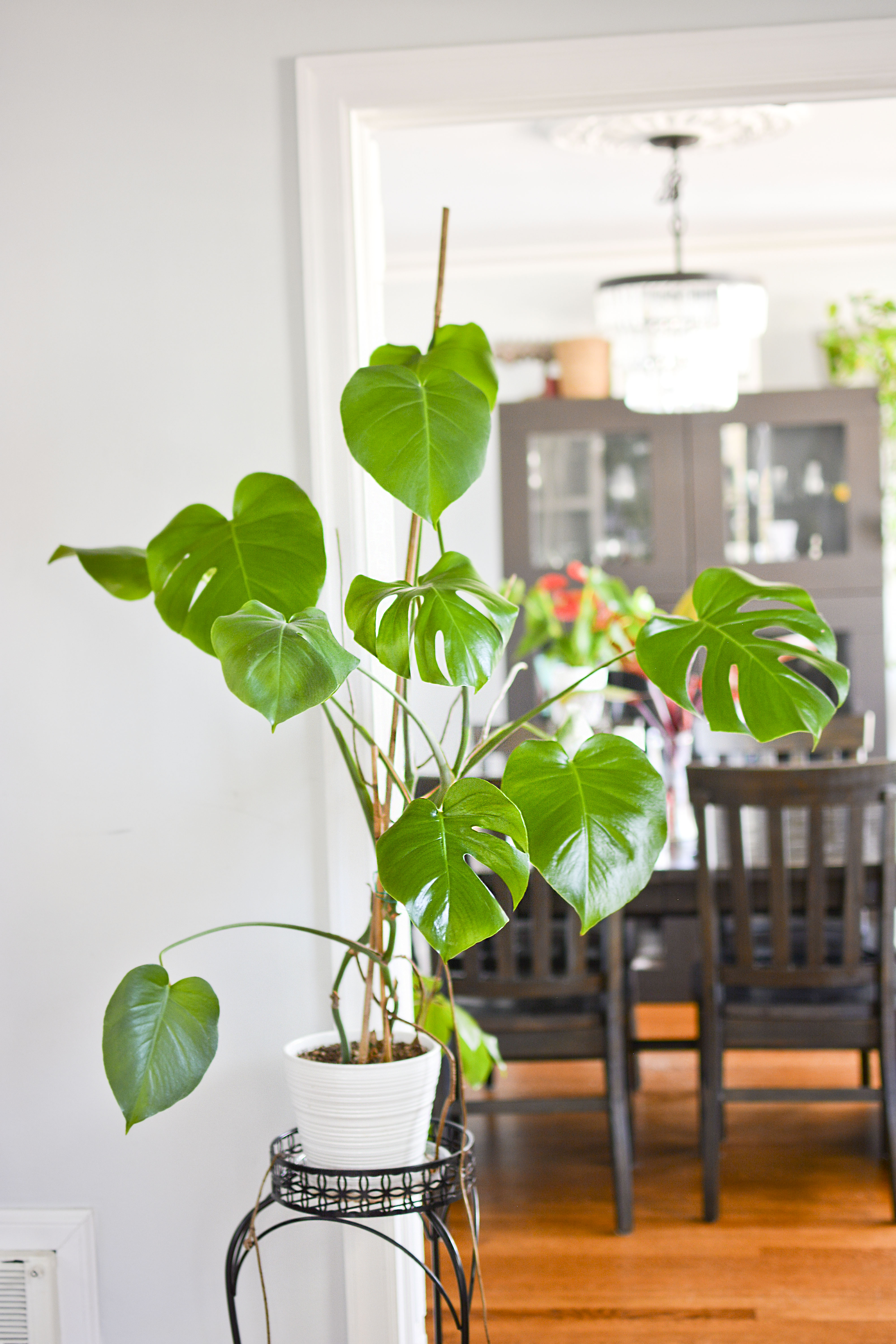
Monstera deliciosa, also known as the Swiss cheese plant, is an insanely popular houseplant known for its large, heart-shaped leaves with unique perforations. It is native to the rainforests of Central and South America, where it can grow up to 70 feet tall! However, when grown indoors, it typically reaches a height of 3-6 feet. If you want to grow a HUGE plant then you need to figure out what the best fertilizer for Monstera is.
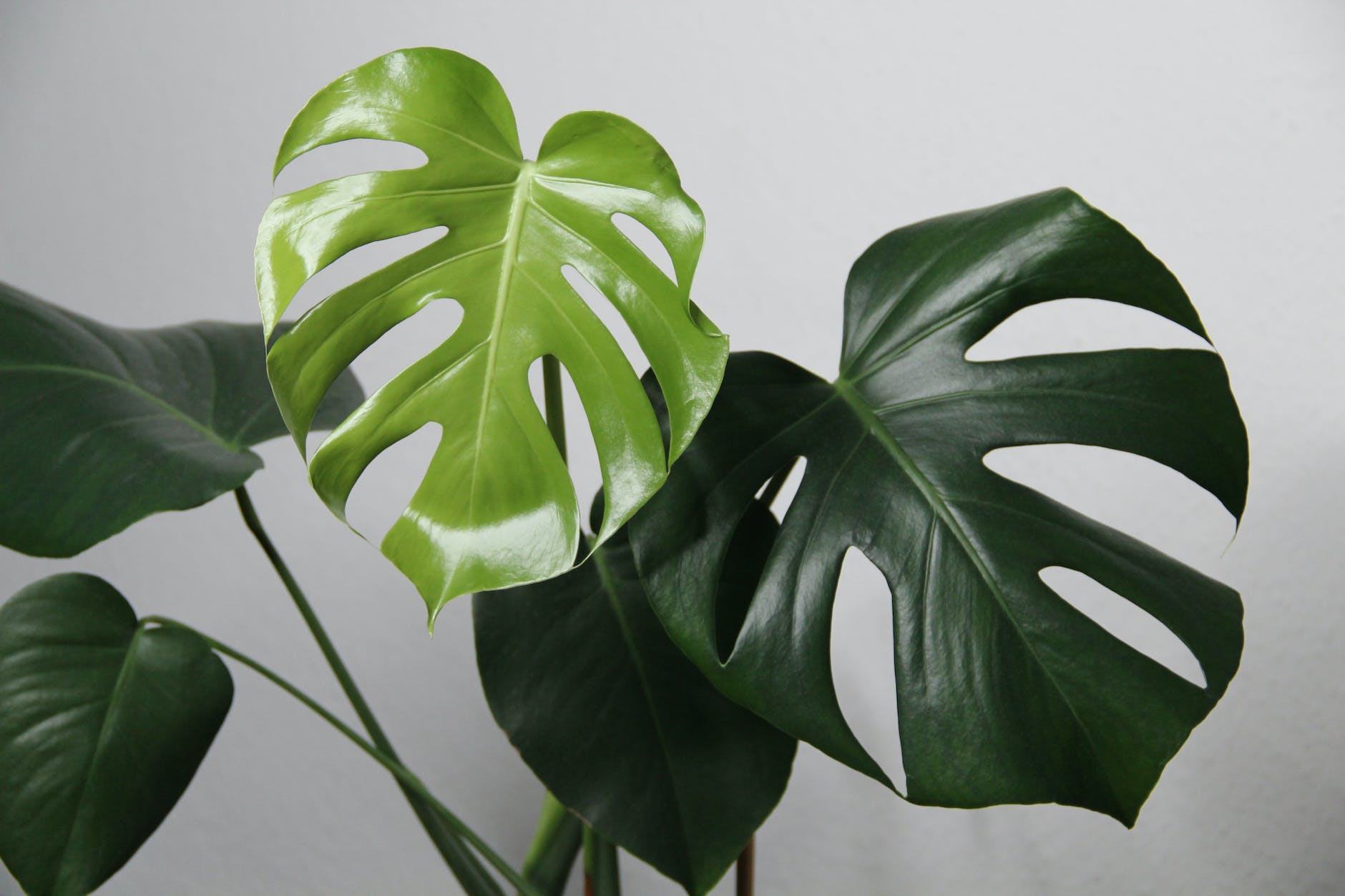
Monstera deliciosa is an easy going plant, making it a good choice for beginner plant owners. It prefers bright, indirect light and moist, well-draining soil. It is important to avoid overwatering, as this can lead to root rot. Monstera deliciosa also benefits from regular fertilization, especially during the growing season. In this post we will teach you about fertilizer and how to pick the best fertilizer for Monstera Deliciosa.
Best Fertilizer for Monstera Deliciosa
Fertilizing Houseplants: Why It’s Important and How to Do It
Fertilizing houseplants is a crucial part of plant care. It helps to ensure that your plants have the nutrients they need to grow and thrive. Houseplants grown in pots have a limited supply of nutrients. Over time, the nutrients in the potting mix are depleted, and the plants need to be fertilized to replenish them.
Here are some of the benefits of fertilizing indoor plants:
- Promotes healthy growth and development. The right fertilizer provides plants with the essential nutrients they need to grow new leaves, stems, and roots. It also helps to improve plant size and vigor.
- Increases flowering and fruiting. Fertilizers can help plants to produce more flowers and fruit. It can also improve the quality and size of blooms.
- Improves plant resistance to pests and diseases. Well-fertilized plants are healthier and more resilient, making them less susceptible to pests and diseases.
- Extends plant life. Fertilizer helps plants to stay healthy and productive for longer periods of time.
There are two main types of fertilizer
Organic vs Inorganic Fertilizer
Organic fertilizers come from plants and animals, such as manure, compost, and bone meal. Inorganic fertilizers are made from synthetic chemicals. Both can be effective, but organic fertilizers are generally considered to be better for the environment. We will talk more about Organic and Inorganic also known a synthetic fertilizer below.
Organic or Synthetic? Which should you use?
Organic fertilizers and Synthetic Fertilizers are both used to provide plants with the nutrients they need to grow and thrive. However, there are some key differences between the two types of fertilizers.
Organic fertilizers are derived from natural sources, such as plant and animal materials. They are typically slower-acting than synthetic fertilizers, but they can improve the overall health and fertility of the soil over time. Organic fertilizers also help to promote beneficial soil microbes, which can improve plant health and resistance to pests and diseases.
Synthetic fertilizers are manufactured from chemical compounds. They are typically faster-acting than organic fertilizers, and they can provide plants with a quick boost of nutrients. However, synthetic fertilizers can also damage the soil and pollute groundwater if they are overused.
Here is a table comparing organic and synthetic fertilizers:
| Characteristic | Organic fertilizers | Synthetic fertilizers |
|---|---|---|
| Origin | Natural | Chemical |
| Speed of release | Slow-acting | Fast-acting |
| Effect on soil | Improves soil health and fertility | Can damage soil if overused |
| Effect on plant health | Promotes healthy growth and resistance to pests and diseases | Can provide a quick boost of nutrients |
| Environmental impact | Low | High if overused |
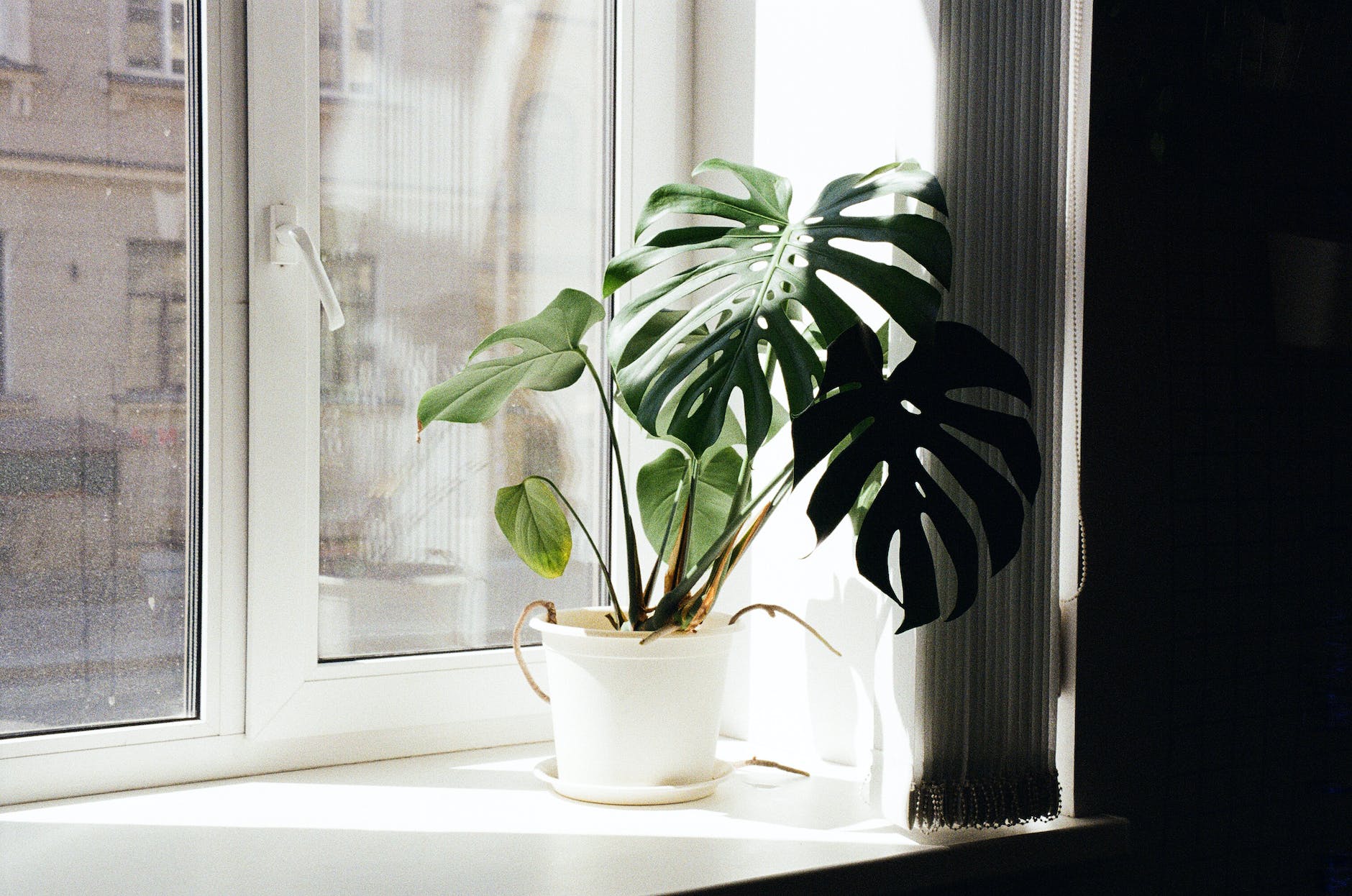
When to fertilize houseplants
The best time to fertilize houseplants is during the growing season, which is typically early spring to fall. During this time, the plants are actively growing and require more nutrients. During the winter months your Monstera might be growing as quickly so diluting your fertilizer down during this time is important.
How to fertilize houseplants
There are a few different ways to fertilize houseplants. The most common method is to use a liquid fertilizer. Liquid fertilizers are diluted with water and applied to the soil around the plant. Another method is to use a slow-release fertilizer. Slow-release fertilizers are applied to the soil and gradually release nutrients over time.
Here are some tips for fertilizing houseplants:
- Always follow the directions on the fertilizer label. Over-fertilizing can damage or kill plants.
- Water your plants before fertilizing. This will help to prevent root burn.
- Apply fertilizer to the soil around the plant, avoiding the leaves and stems.
- Water your plants after fertilizing to help distribute the nutrients throughout the soil.
If you are unsure about how often to fertilize your houseplants or how much fertilizer to apply, it is always best to err on the side of caution and use less fertilizer than you think is necessary.
Here are several related posts you may be interested in:
- How to Grow Monstera Thai Constellation
- How to Make the BEST ZZ Plant Soil Mix
- Philodendron Gloriosum Plant Care
The N-P-K ratio is and How it Relates to Fertilizing:
NPK stands for nitrogen, phosphorus, and potassium. These are the three macronutrients that plants need in the largest quantities.
- Nitrogen is essential for plant growth and development. It helps plants to produce new leaves, stems, and roots.
- Phosphorus is important for root development and flowering. It also helps plants to absorb other nutrients.
- Potassium is necessary for cell growth and development. It also helps plants to resist pests and diseases.
NPK fertilizers are a common type of fertilizer that contains all three of these macronutrients. The numbers on the fertilizer label indicate the percentage of nitrogen, phosphorus, and potassium in the fertilizer. For example, a fertilizer with an NPK ratio of 10-10-10 contains 10% nitrogen, 10% phosphorus, and 10% potassium.
NPK fertilizers are available in a variety of forms, including liquid fertilizers, granular fertilizers, and slow-release fertilizers. We will go into more detail about fertilizer forms below. The best type of NPK fertilizer to use will depend on the type of plants you are growing and the needs of your soil.
Fertilizers can also be classified by their form
- Liquid fertilizers: These fertilizers are dissolved in water and applied to the soil or leaves of plants.
- Granular fertilizer: These fertilizers are in the form of small pellets that are applied to the top of the soil.
- Slow-release fertilizers: These fertilizers release nutrients slowly over time. They are often in the form of granules or tablets that are applied to the soil.
Which is the best fertilizer for Monstera depends on your individual needs and preferences. If you are looking for a fertilizer that will improve the long-term health of your soil and plants, then an organic fertilizer is a good choice. However if you are looking for a fertilizer that will provide your plants with a quick boost of nutrients, then a synthetic fertilizer may be a better option. Using a combination of both is a great way to get the best of both.
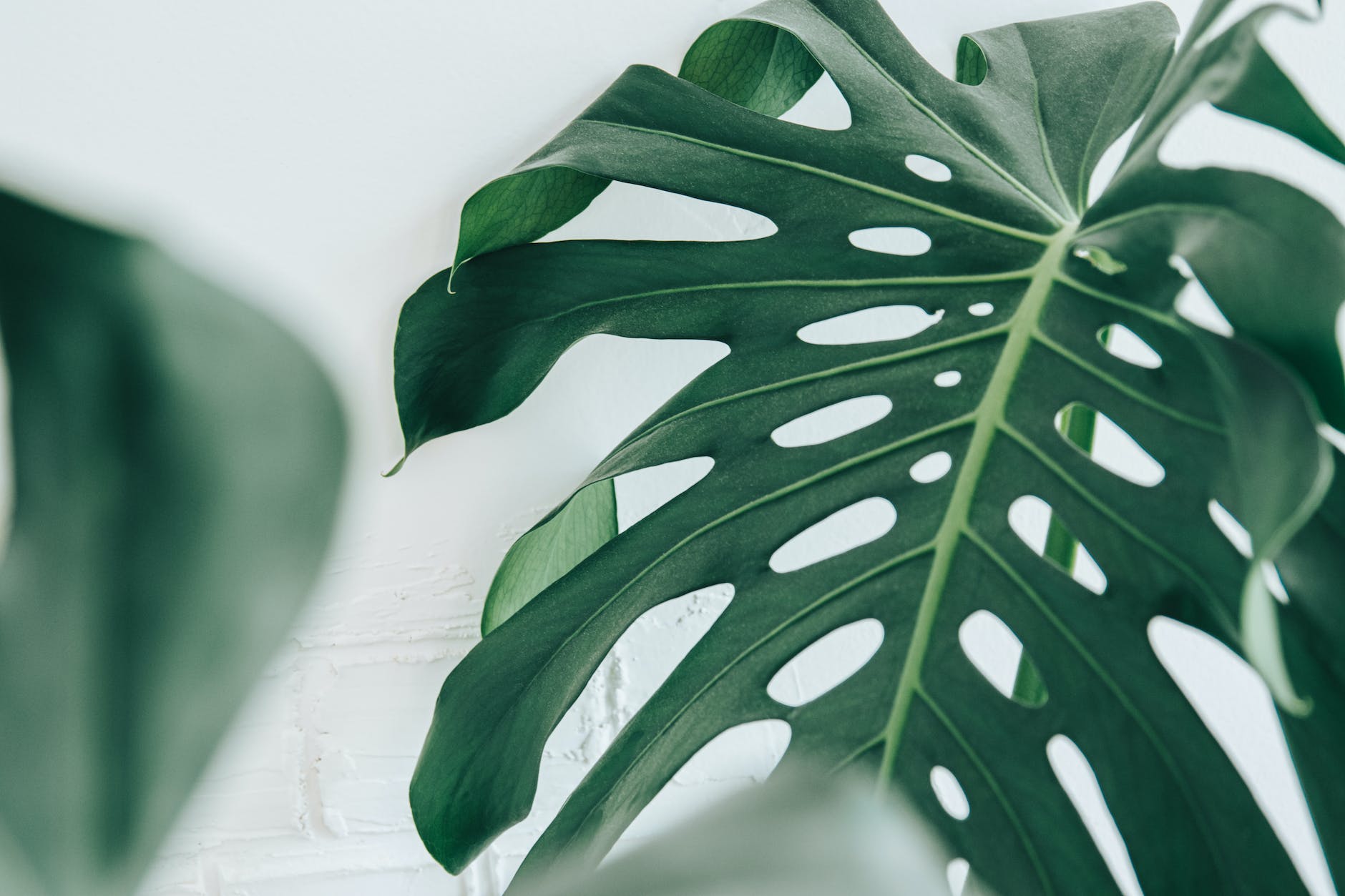
Homemade Fertilizers and How to make your own!
Here are some recipes for homemade fertilizers that you can make using common household ingredients:
Coffee grounds fertilizer
Coffee grounds are a good source of nitrogen, which is essential for plant growth. To make coffee grounds fertilizer, simply add a handful of coffee grounds to the soil around your plants. You can also water your plants with coffee grounds tea, which is made by soaking coffee grounds in water for a few hours.
Banana peel fertilizer
Banana peels are a good source of potassium, which is important for plant flowering and fruiting. To make banana peel fertilizer, dry banana peels in the oven at low heat until they are crispy. Then, grind the banana peels into a powder and add it to the soil around your plants.
Epsom salt fertilizer
Epsom salt contains magnesium, which is important for plant chlorophyll production. To make Epsom salt fertilizer, dissolve one tablespoon of Epsom salt in a gallon of water. Apply the Epsom salt solution to the soil around your plants every two weeks.
Fish emulsion fertilizer
Fish emulsion is a liquid fertilizer that is made from fish waste. It is a good source of nitrogen, phosphorus, and potassium. To use fish emulsion fertilizer, dilute it with water according to the package directions and water your plants with the diluted solution. Beware of using this fertilizer right before company comes over. The smell tends to linger for a few days.
Compost tea
Compost tea is a liquid fertilizer that is made from compost. It is a good source of all the essential nutrients that plants need. To make compost tea, steep compost in water for a few days. Then, strain the compost tea and apply it to your plants.
Worm Castings
Worm castings are the excrement of earthworms. They are a natural fertilizer that is rich in nutrients and beneficial microbes. Worm castings are dark brown or black in color and have a crumbly texture. They are odorless and easy to use.
You can also mix and match these ingredients to create your own custom fertilizer blends.
For example, you could mix coffee grounds, banana peel powder, and Epsom salt to create a fertilizer high in nitrogen, potassium, and magnesium.
It is important to note that homemade fertilizers can vary in strength and potency. It is always best to start with a diluted solution.
The best fertilizers for monstera deliciosa are those high in nitrogen and potassium. Nitrogen is essential for leaf growth, while potassium helps to promote strong roots and stems.
Here are some specific fertilizer recommendations:
- Balanced liquid fertilizer: A balanced liquid fertilizer with an NPK ratio of 10-10-10 or 20-20-20 is a good option for monstera deliciosa plants. You can dilute the fertilizer to half-strength and apply it every two weeks during the growing season.
- Slow-release fertilizer: A slow-release fertilizer with an NPK ratio of 12-6-6 or 14-14-14 is another good option for monstera deliciosa plants. You can apply slow-release fertilizer once every three months.
- Organic fertilizer: Organic fertilizers, such as compost tea or fish emulsion, are also good options for monstera deliciosa plants. Apply organic fertilizers every two weeks during the growing season.
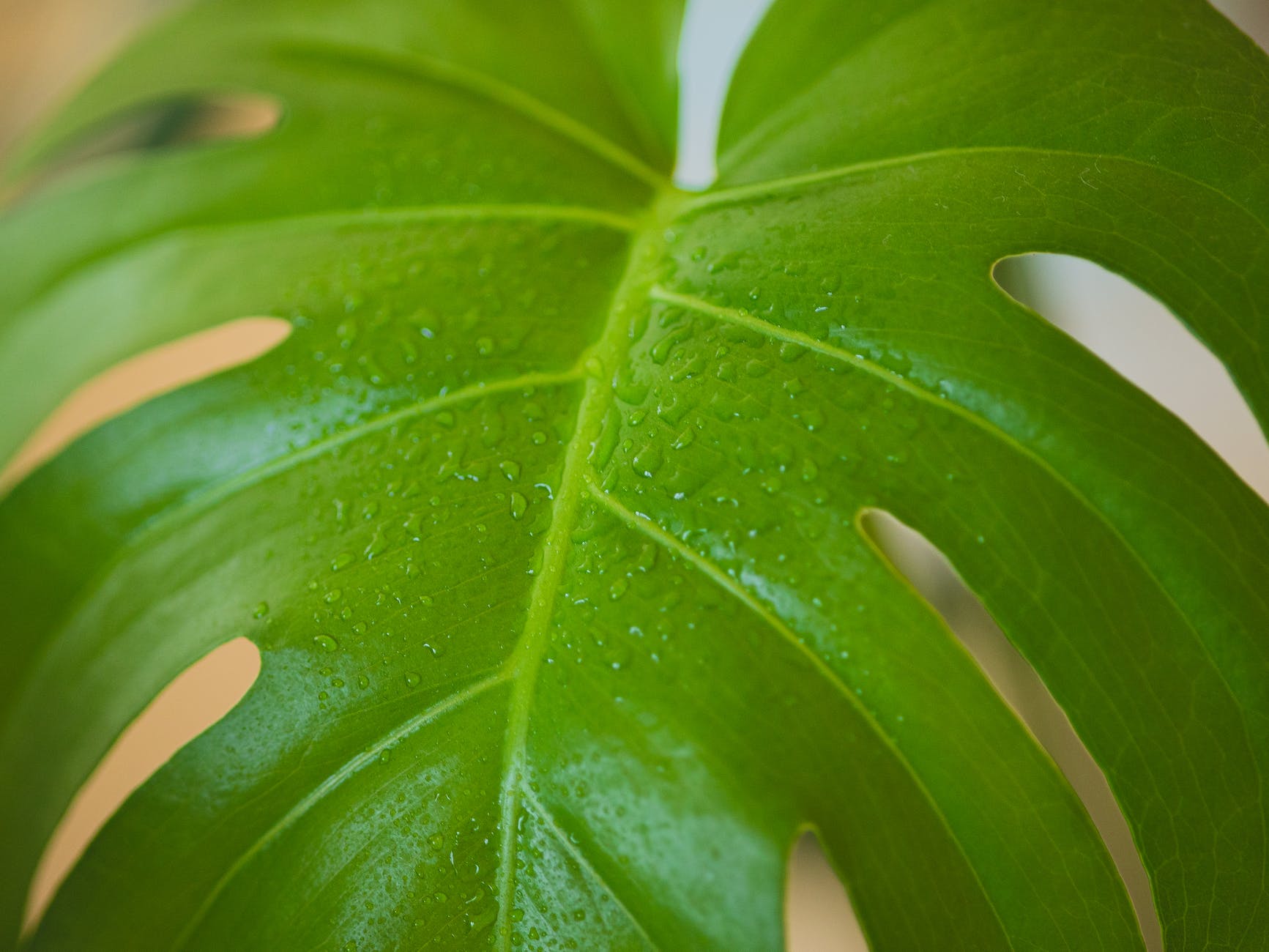
Here are the top 10 Monstera fertilizers from Amazon, based on customer reviews and ratings:
- Monstera Plant Food – Indoor Plant Fertilizer (Liquid Alternative)
- GARDENERA Monstera Plant Superfood – Organic Liquid Kelp Fertilizer for Stunning Growth and Vibrant Foliage
- Lush Leaf | Plant Food (Monstera)
- Miracle-Gro Indoor Plant Food, Liquid Fertilizer for All Types of Plants In Small or Large Indoor Pots
- Bonide Liquid Monstera Plant Food
- Schultz Superbloom Liquid Plant Food
- Espoma Liquid Indoor Plant Food
- Jack’s Classic All-Purpose Fertilizer
- Plant Joy Organic All Purpose Fertilizer
All of these fertilizers are highly rated by customers and work well for monstera plants. They contain the essential nutrients that monstera plants need to grow and thrive.
No matter which fertilizer you choose, it is important to follow the directions on the label. Over-fertilizing can damage your plant, so it is always best to err on the side of caution and use less fertilizer than you think is necessary.
Fertilizing issues are one of the most common problems that houseplant owners face. Too much fertilizer, too little fertilizer, or the wrong kind of fertilizer can all damage your plants.
How to apply Fertilizers
There are two main ways to apply fertilizer to your plants: foliar feeding and soil fertilization.
Foliar feeding is the application of fertilizer directly to the leaves of a plant. This is a quick way to get nutrients into the plant, but it is important to note that not all fertilizers are suitable for foliar feeding. Be sure to read the label carefully to make sure that the fertilizer you are using is safe to apply to the leaves of your plant.
Soil fertilization is the application of fertilizer to the soil around the roots of a plant. This is a more traditional method of fertilization, and it is generally more effective than foliar feeding. However, it is important to note that it can take longer for the nutrients to reach the plant when they are applied to the soil.
Here are some specific tips for foliar feeding:
- Dilute the fertilizer to half strength. This will help to prevent leaf burn.
- Apply the fertilizer to the underside of the leaves. This is where the plant’s stomata are located, and where the nutrients will be absorbed most easily.
- Avoid applying fertilizer in direct sunlight. This can also cause leaf burn.
Here are some specific tips for soil fertilization:
- Apply the fertilizer to the soil around the base of the plant. Avoid applying fertilizer directly to the stem of the plant.
- Gently water the fertilizer into the soil. This will help to distribute the nutrients throughout the soil.
- Fertilize your plants regularly during the growing season. However, reduce or stop fertilizing during the dormant season.
Here are some of the most common fertilizing issues with Monstera:
- Fertilizer burn: This is caused by using too much fertilizer, or by using a fertilizer that is too strong. Symptoms of fertilizer burn include browning leaf margins, leaf scorch, and leaf drop.
- Nutrient deficiency: This is caused by not fertilizing enough, or by using a fertilizer that does not contain the nutrients that your plant needs. Symptoms of nutrient deficiency vary depending on the nutrient that is missing but can include yellowing leaves, stunted growth, and poor flowering.
- Salt buildup: This can occur when you use water-soluble fertilizers that contain high levels of salts. Symptoms of salt buildup include white crusty deposits on the soil surface, browning leaf margins, and leaf drop. Flush your plant with water every few months to remove buildup.
If you suspect that your plant has a fertilizing issue, you can take the following steps:
- Identify the problem. Is the plant over-fertilized, under-fertilized, or suffering from salt buildup?
- Take corrective action. If the plant is over-fertilized, flush it with water and reduce or stop fertilizing. If the plant is under-fertilized, start fertilizing with a balanced fertilizer. If the plant is suffering from salt buildup, flush it with water more frequently.
- Be patient. It may take some time for your plant to recover from a fertilizing issue.
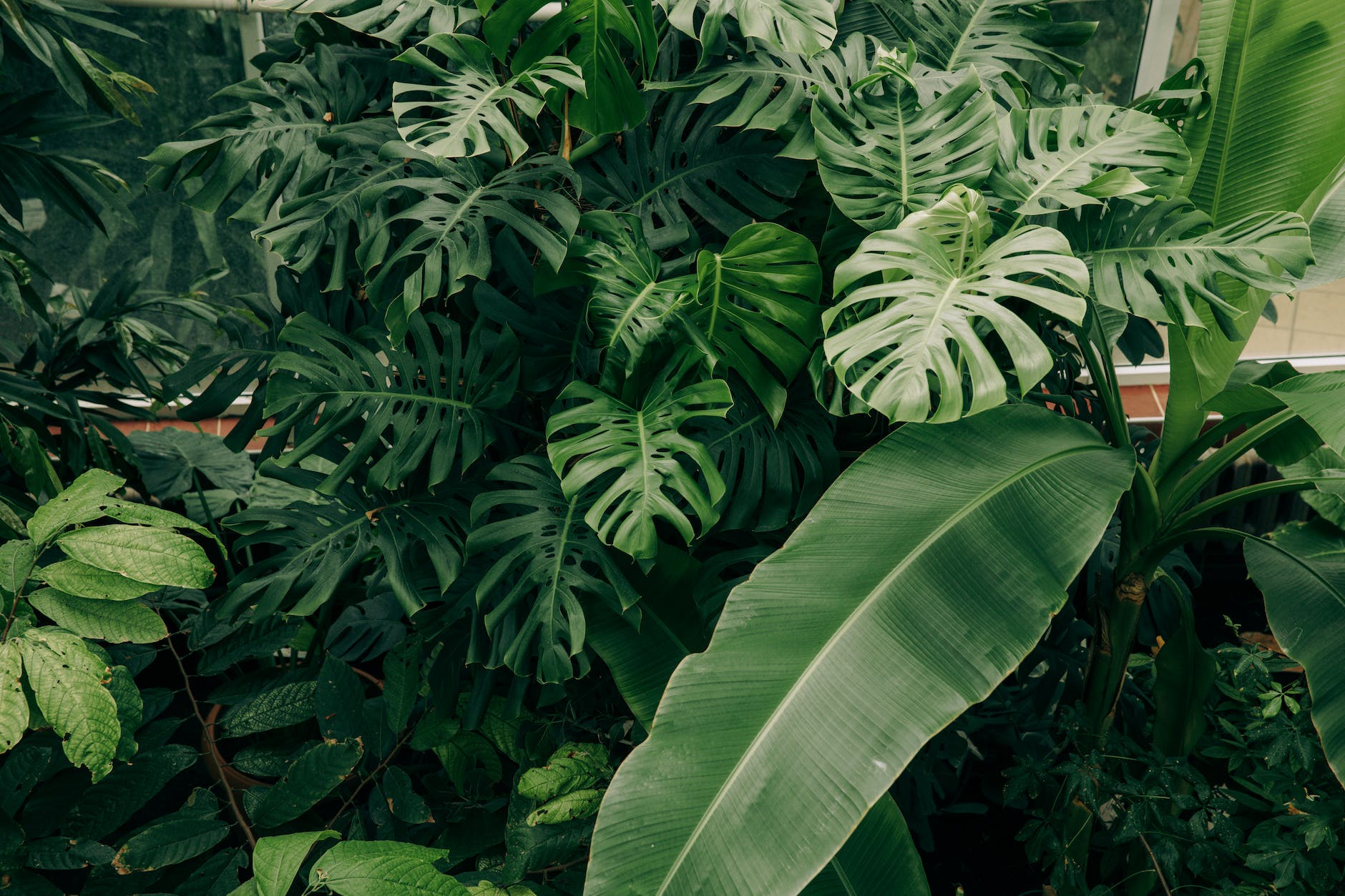
How to fertilize Monstera Deliciosas in your garden
To fertilize Monstera deliciosas in the garden, you can use a balanced fertilizer with an NPK ratio of 20-10-10 or higher. You can also use a fertilizer that is specifically designed for tropical plants.
Here are some tips for fertilizing Monstera deliciosas in your garden:
- Fertilize your plants every two weeks during the growing season (spring and summer). Reduce or stop fertilizing during the dormant season (fall and winter).
- Apply fertilizer to the soil around the base of the plant. Avoid applying fertilizer directly to the stem of the plant.
- Gently water the fertilizer into the soil. This will help to distribute the nutrients throughout the soil.
- Be careful not to over-fertilize your plants. Over-fertilizing can damage or kill your plants.
Once you find the best fertilizer for Monstera Deliciosa you can begin to implement a fertilization schedule for your plant. You will soon see if you picked a good fertilizer based on how your plant is doing. A good fertilizer will provide your plant with enough nutrients to grow large leaves and stems.
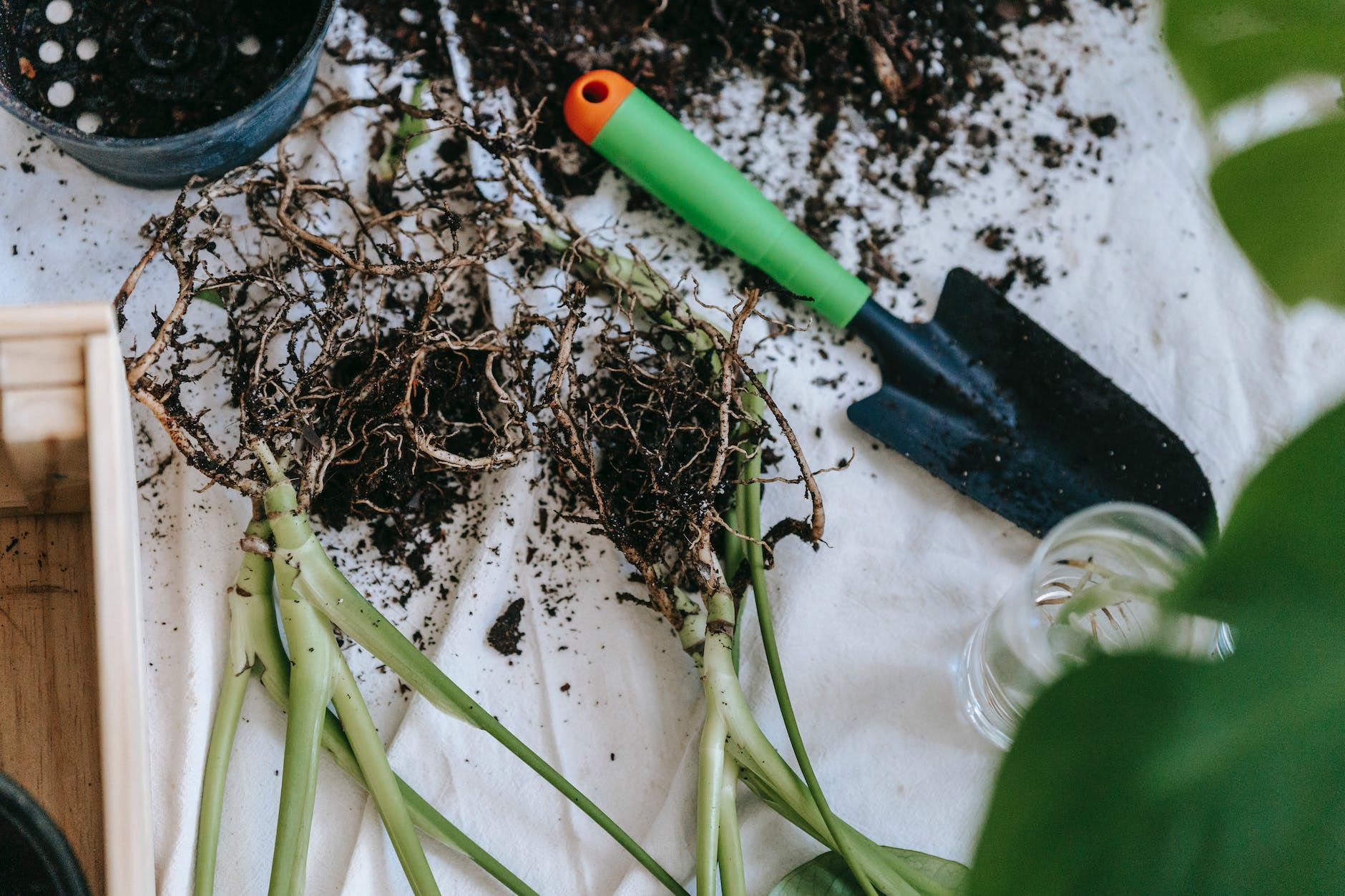
How to repot a Monstera Deliciosa
Needs:
- A monstera deliciosa plant
- A pot with drainage holes
- Potting mix
- Water
- Fertilizer
Instructions:
- Choose a pot that is slightly larger than the root ball of your plant. The pot should also have drainage holes to prevent the roots from sitting in water.
- Fill the pot with potting mix, leaving about an inch of space at the top.
- Place your plant in the pot and backfill with potting mix, gently tamping down around the roots.
- Water your plant thoroughly until water runs out of the drainage holes.
- Place your plant in a bright, indirect light location. Avoid placing your plant in direct sunlight, as this can scorch the leaves.
- Water your plant regularly, allowing the top inch of soil to dry out between waterings.
- Fertilize your plant every two weeks during the growing season (spring and summer) with a balanced fertilizer. Reduce or stop fertilizing during the dormant season (fall and winter).
Tips:
- Monstera deliciosa plants are vining plants, so they may need support as they grow. You can provide support by using a moss pole, trellis, or stake.
- Monstera deliciosa plants can be propagated from stem cuttings. To propagate, simply cut a stem from the plant and place it in water. Roots will form within a few weeks. Once the roots are a few inches long, you can plant the cutting in a pot with potting mix.
- Monstera deliciosa plants are relatively low-maintenance plants, but they can be susceptible to pests and diseases. Be sure to inspect your plant regularly for signs of pests or diseases. If you see any problems, treat them immediately.
For a full Guide to Growing Monstera Deliciosa check out our post here!
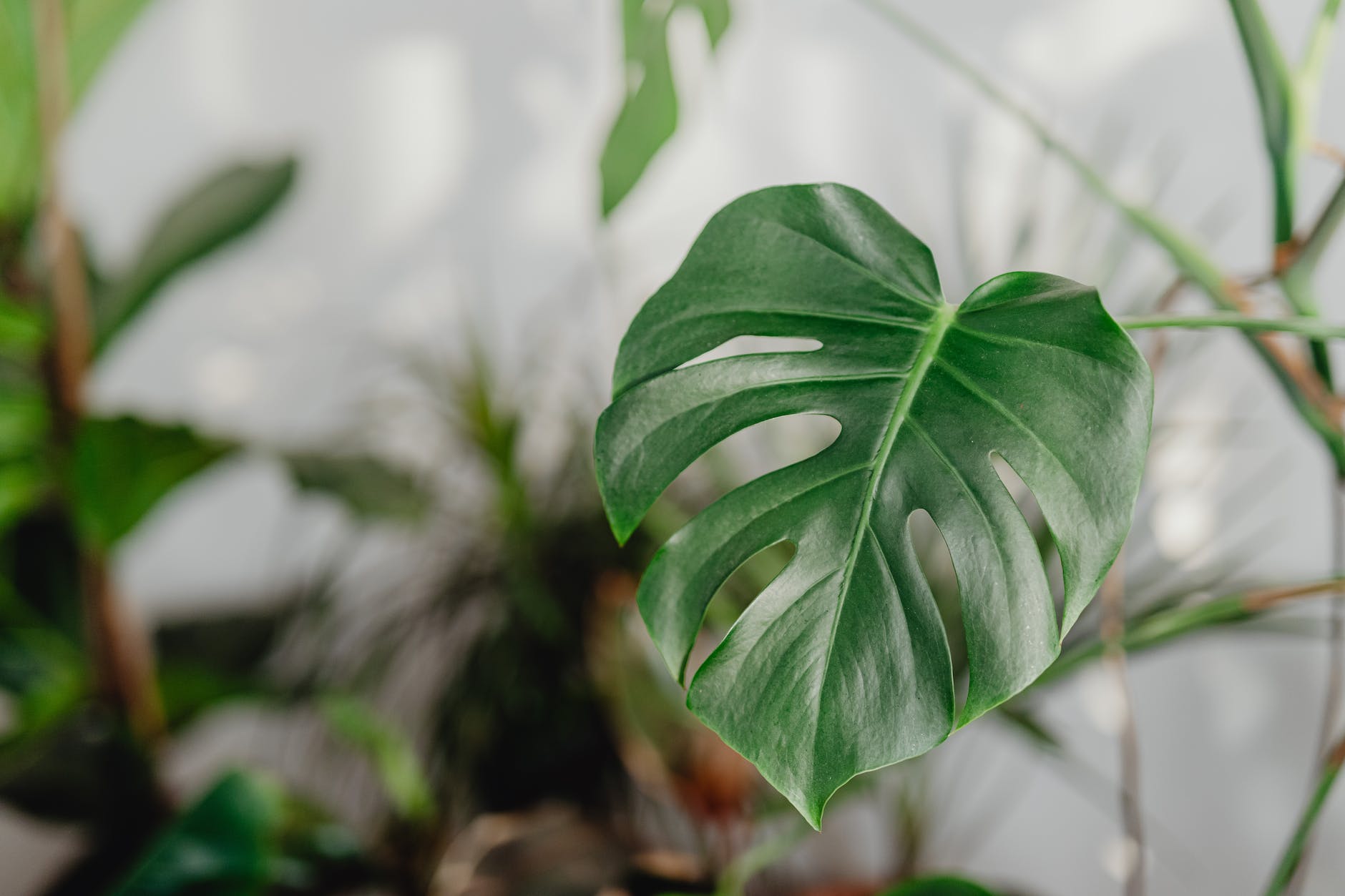
Here are five inexpensive Monstera plants you can own:
- Monstera adansonii: This monstera plant has smaller, fenestrate leaves than most other monstera plants. It is also a relatively low-maintenance plant, making it a good choice for beginner plant parents.
- Monstera minima: This monstera plant is a miniature version of the Monstera deliciosa. It has small, heart-shaped leaves with fenestrations. Monstera minima is a slow-growing plant, but it is easy to care for.
- Monstera obliqua: This monstera plant has unique, velvety leaves with silver markings. It is a more delicate plant than other monsteras, but it is still relatively easy to care for.
- Monstera Peru: This monstera plant has large, heart-shaped leaves with deep fenestrations. It is a vigorous grower and can be trained to climb a trellis or stake.
- Monstera standleyana: This monstera plant has large, oval-shaped leaves with fenestrations. It is a fast-growing plant and can be trained to climb a trellis or stake.
All of these monstera plants can be found at most plant stores for a relatively inexpensive price. They are all easy to care for and make great additions to your collection.
Monstera deliciosa is a versatile plant that can be grown in a variety of ways. It can be grown as a stand-alone plant, or it can be trained to climb a trellis or stake. In its natural habitat, the Monstera Deliciosa is a vigorous climber so it’s a good idea to play into their nature and give them something to climb. As they climb, your Monstera’s leaves will get bigger and more fenestrated. It really is a gorgeous sight to see!
If you love learning and growing plants consider signing up for our quarterly newsletter!
Happy Gardening!
Want More?
Houseplants are gorgeous living home decor. It is worthwhile learning how to properly care for them.
IF YOU LIKE THIS POST
You might also like these:
- How to properly water your houseplants
- Best soil to tropical houseplants
- Best Indoor Trailing Houseplants
We’d love to hang out with you on our social channels. You can subscribe to our blog and find us on Facebook, Youtube, Instagram and Pinterest! Feel free to reach out if you have any plant questions!
DISCLOSURE
This blog post may contain affiliate links. Which means if you click on a link and go on to buy the product I recommend, I may get a small commission at no extra cost to you.
Thank you for your support. It means the world to us!
The Thrifted Planter
Ciearra is a gardener and houseplant enthusiast of over 10 years! She has been growing indoors and outdoors. Supplying food for her family and beautifying her home with annuals, perennials and houseplants! Ciearra is passionate about sharing her knowledge of plant care with anyone who needs help or a quick plant growth tip! When she’s not blogging you can find her tending to her chickens, dogs and hanging out with her family
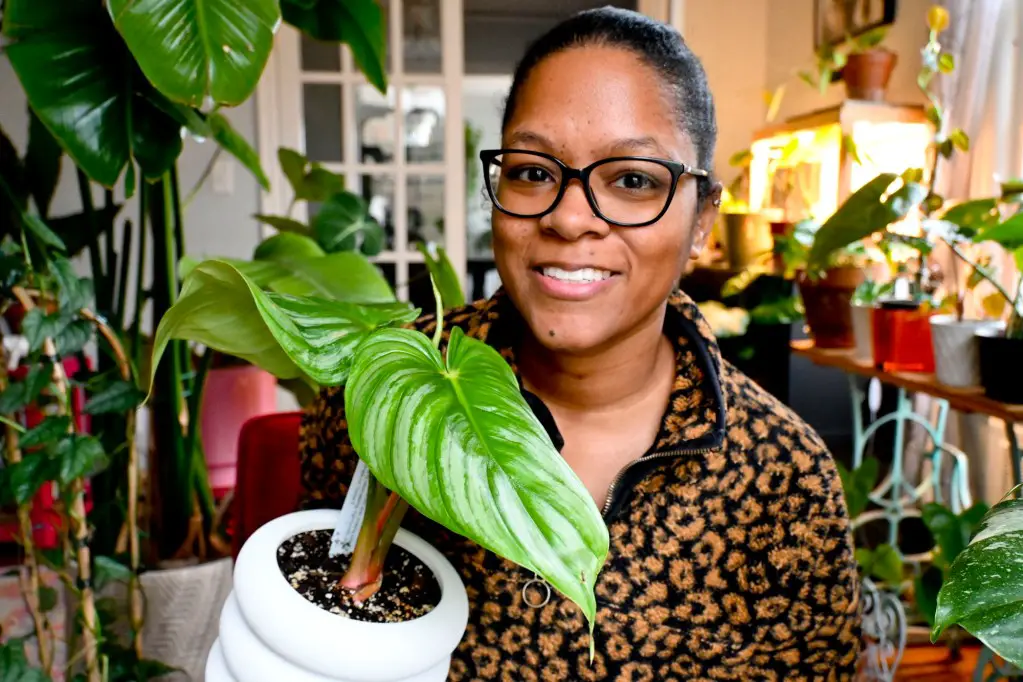



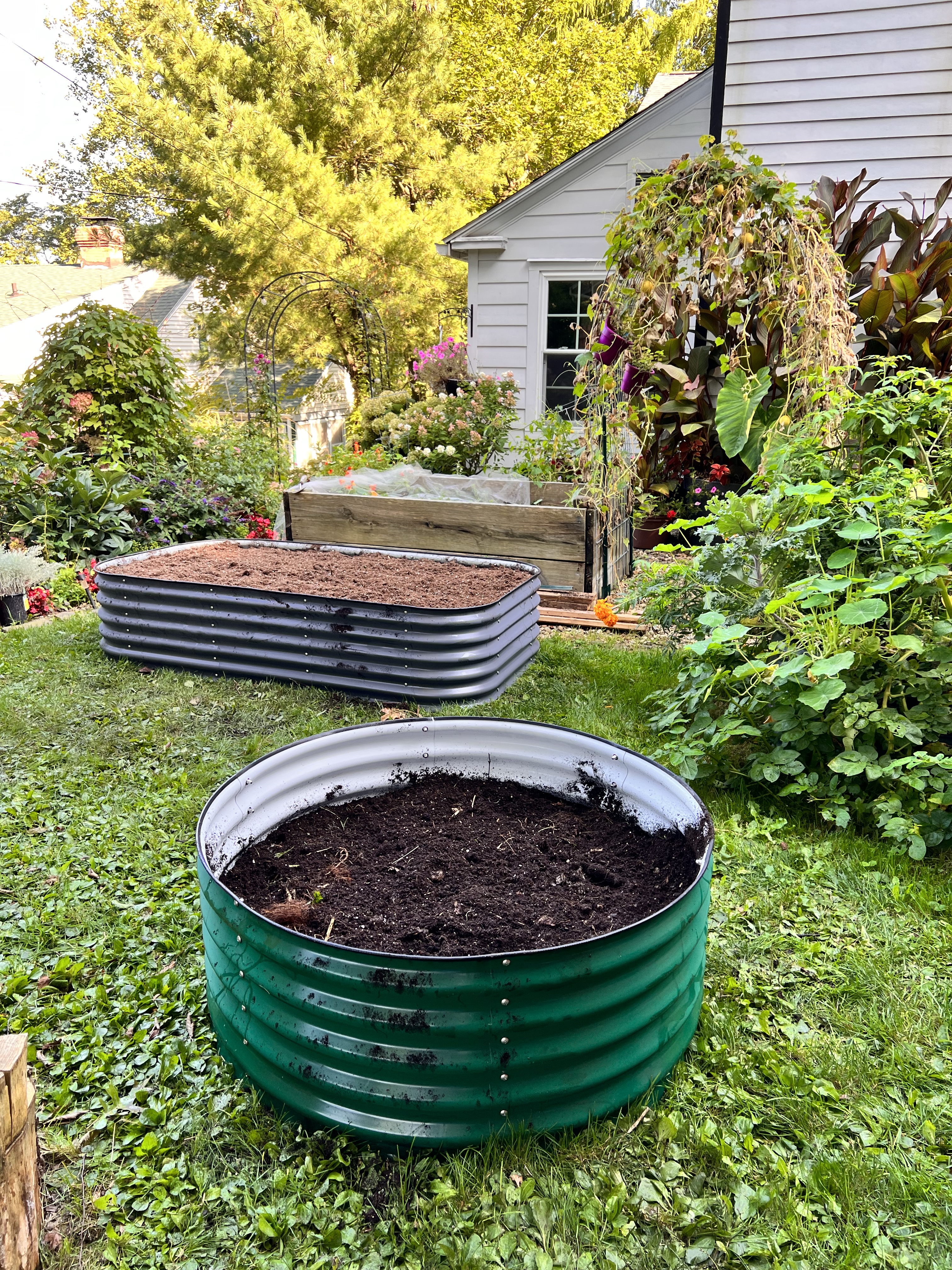




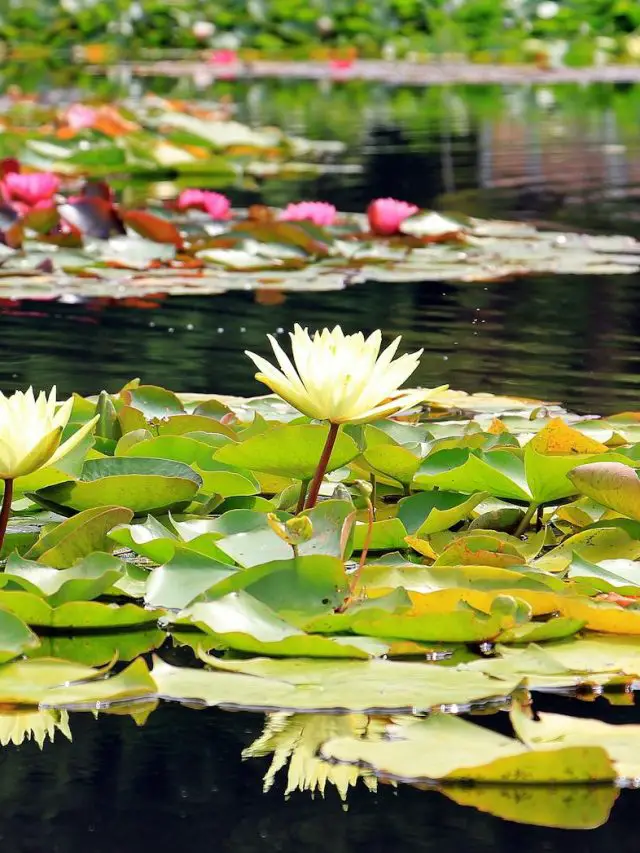
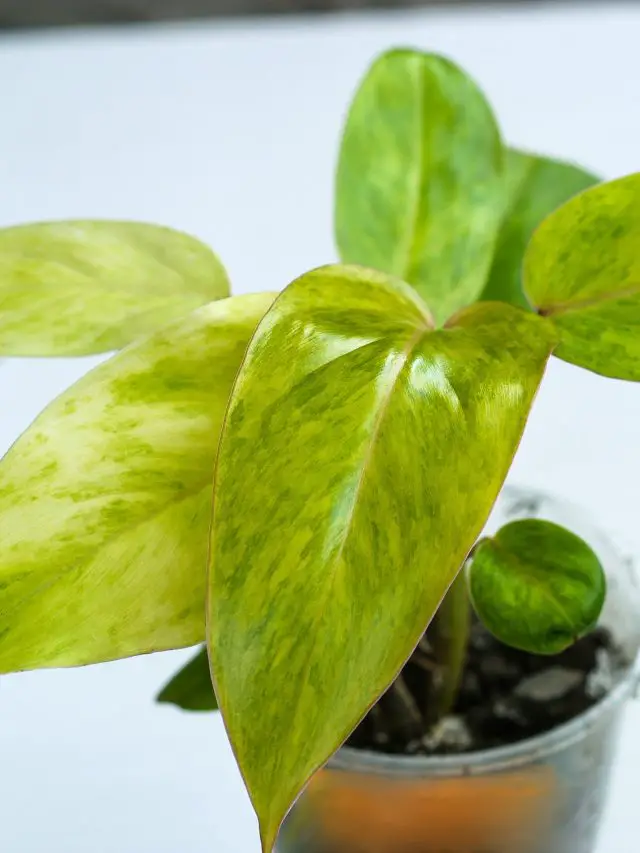
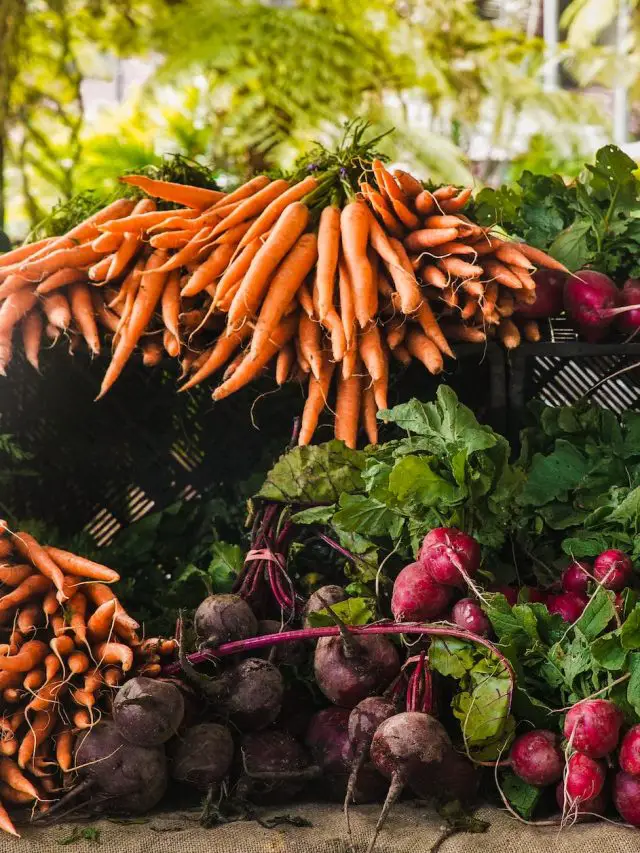
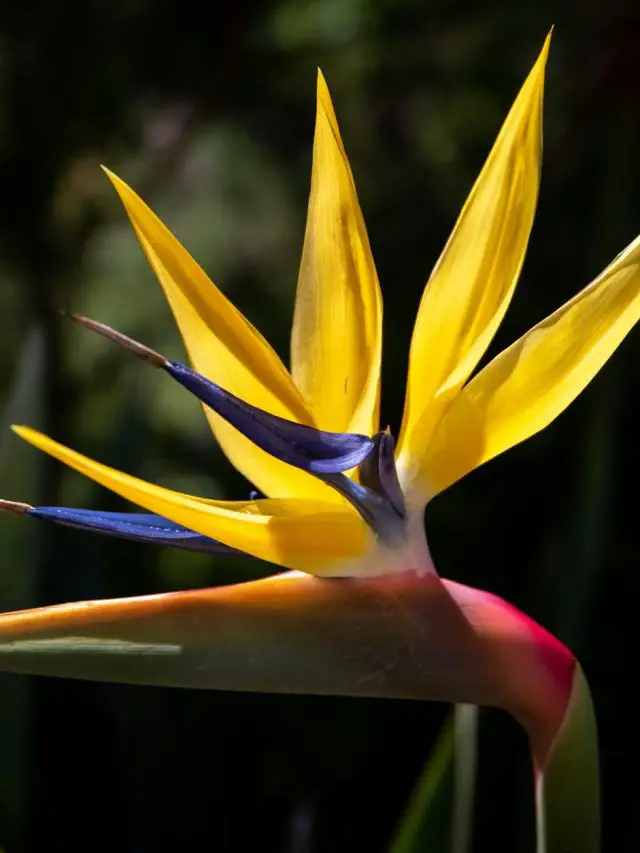
[…] The Best Fertilizer for Monstera Deliciosa […]
[…] Best Fertilizer for Monstera Deliciosa […]
[…] out this post for safe houseplants for […]
[…] How to Fertilize Monstera Deliciosa […]
[…] The Best Monstera Fertilizer Guide […]